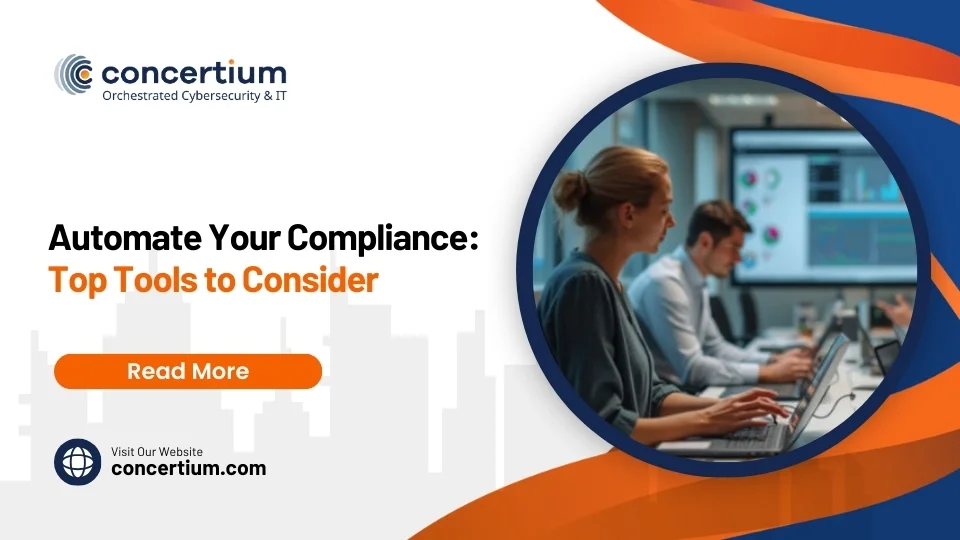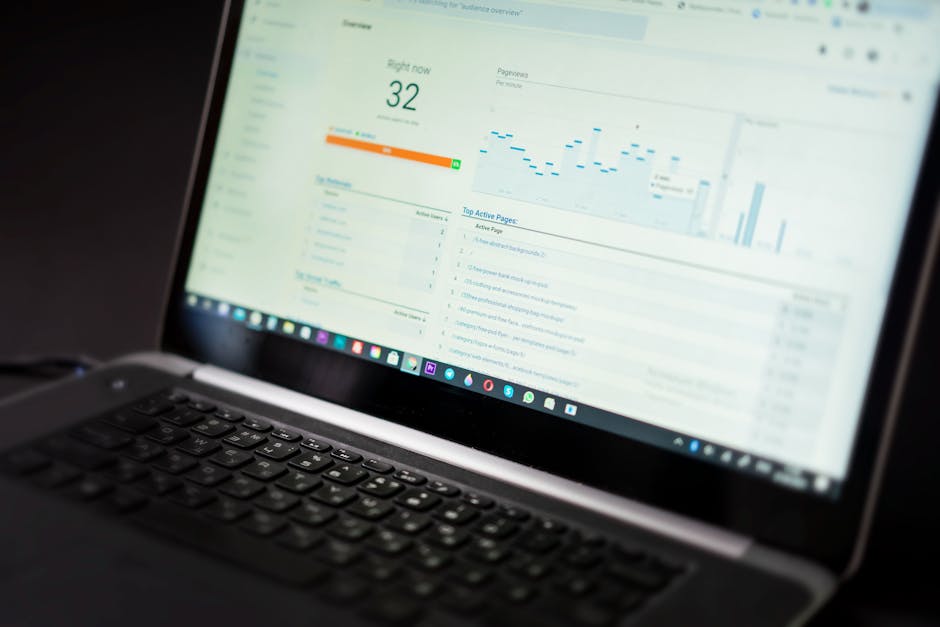Compliance automation software is changing how businesses manage regulatory requirements in today’s , tech-driven world. With the constant evolution of industry regulations, it’s no wonder companies are turning to automation to minimize manual processes that are often riddled with inefficiencies.
Here’s what you need to know about compliance automation software:
- Effortless Regulatory Compliance: Streamlines evidence gathering and reporting.
- Reduce Manual Work: Frees up time by eliminating tedious, repetitive tasks.
- Improved Accuracy: Cuts down on errors from manual processes.
Instead of struggling with time-consuming manual methods, compliance automation software can keep your business aligned with the latest standards seamlessly. As regulations grow stricter and more complex, maintaining compliance manually isn’t just inefficient – it’s risky. Businesses today need agile solutions to tackle these challenges head-on.
Organizations, especially those managing sensitive data, can benefit immensely by integrating compliance automation into their operations. This approach not only ensures adherence but also fosters a robust compliance culture, making regulatory adherence a smooth process powered by technology.
Compliance automation software terms made easy:
- governance risk and compliance framework
- governance risk and compliance tools
- risk and compliance tools
Understanding Compliance Automation Software
Compliance automation software is a game-changer for businesses aiming to stay ahead of regulatory demands. It efficiently handles the heavy lifting of compliance processes, allowing companies to focus on their core activities without the constant worry of meeting regulatory standards.
Real-Time Monitoring
One of the standout features of compliance automation software is its ability to provide real-time monitoring. This means that businesses can have continuous oversight of their compliance status, ensuring that any deviations from regulations are caught immediately. Real-time alerts help organizations to act swiftly, reducing the risk of regulatory fines and maintaining a strong compliance posture.
Effective Risk Management
Risk management is another critical component of compliance automation. By utilizing advanced data analysis tools, these platforms can identify potential compliance risks and gaps. This allows organizations to prioritize and address these issues proactively. The software supports risk assessment methodologies and helps in planning risk treatment, ensuring that resources are allocated efficiently to mitigate high-risk areas.
“Organizations acknowledge that the root cause of compliance violations is due to lack of visibility in their compliance posture.”
Benefits of Compliance Automation Software
- Streamlined Audit Management: Automates the preparation and execution of audits, making them less time-consuming and more accurate.
- Reduced Manual Errors: By automating routine compliance tasks, the risk of human error is minimized.
- Proactive Management: Automated alerts and remediation features ensure quick response to compliance issues.
Compliance automation software empowers businesses with a comprehensive solution to manage compliance efficiently and effectively. It not only reduces the burden of manual compliance efforts but also improves the overall risk management strategy of an organization. With these tools, companies can maintain a strong compliance posture and focus on growth and innovation.
Next, we’ll dive into the Top Compliance Automation Tools that can help your business achieve these goals.
Top Compliance Automation Tools
When it comes to compliance automation, selecting the right tools can significantly transform how your organization manages regulatory requirements. Let’s explore some of the top tools offered by Concertium that can help streamline your compliance processes.
Concertium Compliance Suite
The Concertium Compliance Suite provides a comprehensive solution for automated evidence collection and real-time monitoring. This tool ensures that your compliance status is continuously updated, allowing for immediate detection of any deviations from regulatory standards. With features like continuous monitoring, businesses can maintain a proactive approach to compliance management.
Concertium Framework Manager
The Concertium Framework Manager is designed to simplify the management of various compliance frameworks. It helps in creating audit-ready documentation, ensuring that your organization is always prepared for audits. This tool provides a structured approach to managing compliance requirements, making it easier to adhere to industry standards.
Concertium Unified Compliance
For organizations looking for a centralized solution, the Concertium Unified Compliance tool offers unified compliance management. It streamlines the process by automated evidence mapping, ensuring that all compliance activities are aligned and easily accessible. This tool reduces the complexity of managing multiple compliance requirements across different departments.
Concertium Policy Automation
With Concertium Policy Automation, generating and managing compliance policies becomes a breeze. This tool offers automated policy generation with prebuilt security policies, allowing organizations to implement industry best practices swiftly. It ensures that your policies are always up-to-date and compliant with the latest regulations.
Concertium Centralized Management
Finally, Concertium Centralized Management offers custom framework management and centralized evidence management. This tool provides a holistic view of your compliance activities, enabling efficient management and documentation. It supports custom frameworks, ensuring that your compliance management is custom to your specific industry needs.
These tools collectively empower organizations to automate their compliance processes, ensuring efficient management and adherence to regulatory requirements. By leveraging Concertium’s solutions, businesses can focus on growth and innovation without the constant worry of compliance issues.
In the next section, we’ll discuss the Benefits of Compliance Automation and how these tools can lead to cost-effectiveness, proactive alerts, and improved risk management.
Benefits of Compliance Automation
Implementing compliance automation software offers numerous benefits that can revolutionize the way organizations manage regulatory requirements. Let’s explore the key advantages: cost-effectiveness, proactive alerts, and improved risk management.
Cost-Effectiveness
One of the most significant benefits of compliance automation is its ability to cut costs. By automating routine compliance tasks, businesses reduce the need for manual labor, which can be time-consuming and prone to error. This allows compliance teams to focus on more strategic initiatives, ultimately saving both time and money. Furthermore, automation minimizes the risk of non-compliance penalties, which can be costly and damage an organization’s reputation.
Proactive Alerts
Compliance automation software provides real-time monitoring and proactive alerts. This means that any deviations from compliance standards are detected immediately, allowing organizations to address issues before they escalate. Proactive alerts ensure that stakeholders are informed of compliance violations, upcoming audits, or regulatory changes, enabling quick responses and corrective actions. This feature not only improves compliance readiness but also ensures that organizations stay ahead of potential compliance challenges.
Improved Risk Management
Automated compliance tools significantly improve risk management by continuously monitoring compliance status and identifying potential risks. These tools analyze large volumes of data to detect patterns and anomalies, helping organizations pinpoint areas of non-compliance. By providing a clear understanding of compliance risks, businesses can prioritize and allocate resources efficiently to mitigate high-risk areas. This proactive approach to risk management reduces the likelihood of successful cyber-attacks and data breaches, safeguarding sensitive information and maintaining regulatory compliance.
In the following section, we’ll explore how organizations can implement compliance automation effectively, ensuring a seamless transition from manual to automated processes.
How to Implement Compliance Automation
Implementing compliance automation software is a strategic move that can transform an organization’s approach to meeting regulatory standards. Here’s a simple guide to help you make the transition smoothly:
Review Your Compliance Program
Before diving into automation, it’s crucial to understand your existing compliance framework. Start by reviewing your current compliance program in detail. Identify the areas where manual processes are most time-consuming and error-prone. This review will help you pinpoint which tasks could benefit most from automation. For example, if your team spends countless hours on evidence gathering, this might be a prime candidate for automation.
Plan Your Process Automation
Once you’ve identified the tasks ripe for automation, it’s time to plan. Develop a clear strategy that outlines how automation will fit into your current processes. Consider how automated systems will integrate with existing workflows and what changes need to be made. It’s also important to involve your compliance team in this planning phase to ensure their insights and needs are considered. This collaborative approach will help in designing a system that truly supports your compliance objectives.
Choose the Right Tools
Selecting the right compliance automation software is a critical step. Look for tools that align with your specific needs and budget. Consider factors like ease of use, integration capabilities, and scalability. For instance, if your organization relies heavily on cloud services, a tool with strong cloud integration features would be beneficial. Additionally, prioritize software that offers robust data analysis and reporting features, as these will provide valuable insights into your compliance status.
By following these steps, organizations can effectively transition to automated compliance processes, leading to improved efficiency and reduced risk of non-compliance. In the next section, we’ll address some frequently asked questions about compliance automation software to further clarify its benefits and functionalities.
Frequently Asked Questions about Compliance Automation Software
What is compliance automation software?
Compliance automation software is a tool designed to streamline and simplify the process of adhering to regulatory standards. It uses technology to automate tasks that traditionally required manual effort, such as evidence collection, risk assessments, and compliance reporting. This software ensures that your organization stays up-to-date with the latest regulations and standards without the need for constant manual monitoring.
By leveraging automation, businesses can reduce the time and resources spent on compliance tasks, allowing teams to focus on more strategic activities. The goal is to create a seamless, efficient compliance process that minimizes the risk of errors and non-compliance.
How does compliance automation software work?
Compliance automation software works by integrating with your existing systems to monitor and manage compliance-related activities. It often uses AI and machine learning to analyze data, detect potential compliance risks, and provide actionable insights. Here’s a quick breakdown of how it typically functions:
- Data Collection: The software gathers data from various sources, such as internal systems and external regulations.
- Data Analysis: It analyzes this data to identify compliance gaps or potential risks.
- Automated Reporting: The tool generates reports that highlight compliance status and areas needing attention.
- Task Automation: Routine tasks, like self-assessments and control testing, are automated to reduce manual workload.
- Alerts and Notifications: The software sends alerts for any detected compliance issues, enabling prompt action.
By automating these steps, organizations can maintain continuous compliance and quickly adapt to regulatory changes.
What are the benefits of using compliance automation software?
Using compliance automation software offers several key benefits:
- Cost-Effectiveness: Automating compliance tasks reduces the need for extensive manual labor, lowering operational costs.
- Proactive Alerts: The software provides real-time alerts, allowing organizations to address compliance issues before they escalate.
- Improved Risk Management: With automated risk assessments and data analysis, organizations gain better visibility into potential compliance risks.
- Improved Efficiency: Automation streamlines compliance processes, freeing up resources for more strategic initiatives.
- Scalability: As your business grows, compliance software can easily scale to accommodate increased data and regulatory demands.
These benefits make compliance automation an attractive option for organizations looking to improve their compliance posture while optimizing resource allocation.
Conclusion
At Concertium, we understand that navigating the complex world of compliance can be overwhelming. That’s why we focus on delivering custom solutions that fit your unique business needs. Our nearly 30 years of experience in cybersecurity and compliance have equipped us with the expertise to help businesses like yours stay ahead of evolving threats and regulatory demands.
Our approach is simple: we believe in leveraging the power of technology to automate and streamline compliance processes. From our AI-improved observability to automated threat eradication, our solutions are designed to provide maximum protection with minimal disruption. This commitment to innovation ensures that your business not only meets regulatory requirements but also thrives in a secure environment.
By choosing Concertium, you’re not just investing in compliance software; you’re investing in peace of mind. Our custom solutions empower your business to focus on growth, without the constant worry of falling out of compliance or facing cyber threats.
Explore how our Consulting and Compliance Services can help you automate your compliance processes and safeguard your business. Let us be your trusted partner in cybersecurity, providing you with the tools and expertise you need to succeed.





